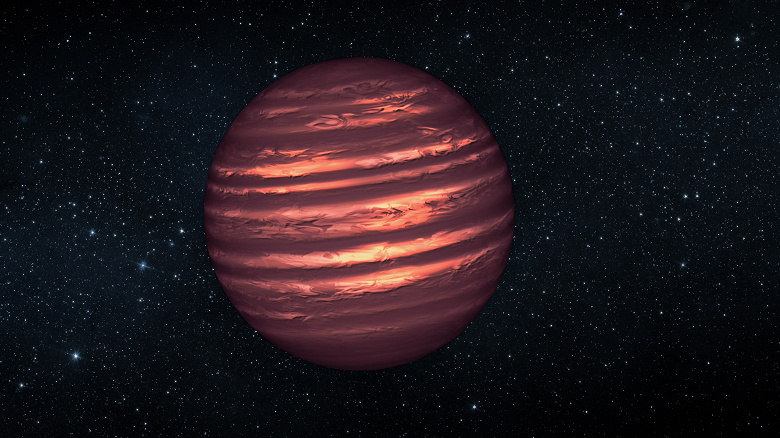Hydrogen, methane, and even hydrogen sulfide have been discovered in the atmosphere of the Y-dwarf
Astronomers using the «James Webb Space Telescope» (JWST) observed the cool brown dwarf WISEPA J182831.08+265037.8, also known as WISE 1828. This observation provided important data on the composition of the brown dwarf's atmosphere.
Brown dwarfs — This is a type of object located between planets and stars. They have masses below the limits required for hydrogen nuclear reactions to occur, approaching the mass of Jupiter. Within the class of brown dwarfs there is a subclass of Y-dwarfs, which have temperatures below 500 K and are the coolest and faintest substellar objects currently known. They are of particular interest to astronomers.
WISE 1828 — a typical representative of Y-dwarfs and is located only 32.37 light years from us. Previous studies have shown that its radius is comparable to that of Jupiter, and its mass is approximately 10 Jupiter masses. The surface temperature of the brown dwarf WISE 1828 was estimated at 378 K.
Recently, a team of astronomers from the Institute for Environmental Studies in California, led by Ben Wei Peng Liu, conducted a detailed study of the atmosphere of WISE 1828 using JWST's near-infrared spectrograph, NIRSpec.
Astronomers have detected water, carbon monoxide, carbon dioxide, methane, ammonia and hydrogen sulfide in the atmosphere of WISE 1828. Of particular interest is the discovery of hydrogen sulfide, which was the first observation of this substance in the atmosphere of a Y dwarf.
The study also found that WISE 1828 has higher ratios of oxygen to hydrogen and sulfur to hydrogen compared to the Sun. And the ratio of nitrogen to hydrogen content is close to the value for the Sun. It was also noted that the content of methane-d1 in the atmosphere of this brown dwarf is below normal.
Astronomers, using atmospheric simulations, were able to determine the radius and temperature of WISE 1828. One model puts the radius at 1.23 Jupiter radii, at 534 K, while another model puts the radius at less than — 1.03 radii of Jupiter, and the temperature is 425 K.
This study not only expands the understanding of atmospheric processes on brown dwarfs, but also provides new information for comparison with the atmospheres of exoplanets. Going forward, combining observations and modeling of the atmospheres of objects such as WISE 1828 will allow scientists to better understand the nature of these objects and their contribution to the formation of exoplanetary systems.

